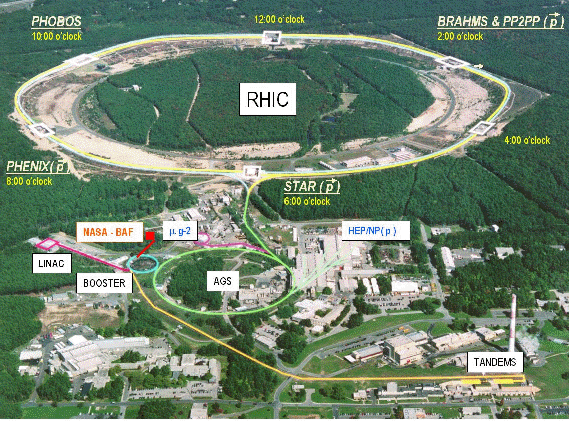
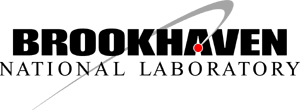


COLLIDER-ACCELERATOR
DEPARTMENT

March 2000
| Congratulations Tom
Kerner for suggesting the winning name The Particle Post . |
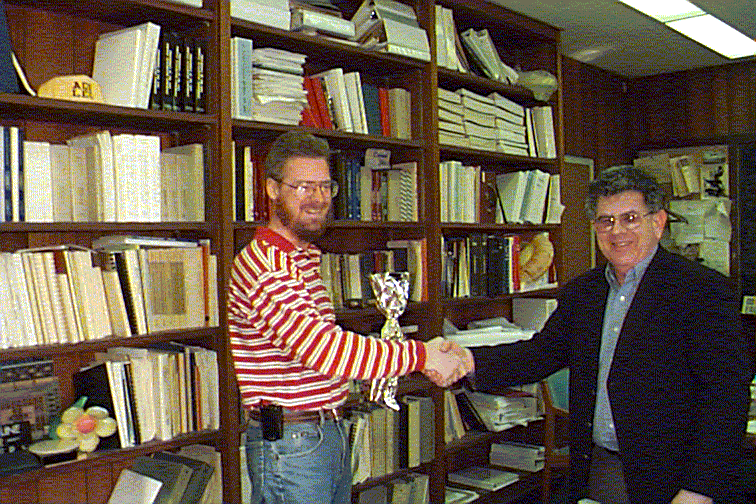
|
The Particle Post can
now be found every month at this permanent address:
http://server.c-ad.bnl.gov/esfd/ParticlePost.htm
You may want to bookmark
it!
Please remember that any news that you have pertaining to our department or personnel is appreciated. For example: what's going on in your work area, length of BNLemployment anniversary, birthdays, weddings, new births, retirements, "gossip". It's up to you - it's YOUR newsletter; just send your input to me lopresti@bnl.gov.
Ever since I have been an employee of BNL the name Harvey Lotko was always synonymous with the word cooperation. Harvey was always the one to contact when you needed just about anything. He certainly has made all our lives easier. Once you asked Harvey for help you never had to worry if it was going to get done. He always took our concerns very seriously and would even come up with additional ideas to make things even better. He always treated us ladies with the utmost courtesy, respect and care. He always knew just the right person to contact to get every job done on time and perfectly. Harvey was always the "right hand" of the secretary and will be sorely missed. I am fortunate to have worked with Harvey and grateful to call him friend. Harvey, from all your fellow workers this is for you CLICK HERE
Penny Lo Presti
![]()
 A Note From Our Chairman
A Note From Our Chairman
A lot has been happening since the last Particle Post edition. RHIC is coming to life. The AGS fixed target program has been running well and our various construction initiatives have been making good progress. On March 15 we will terminate proton operations for E821 and start injecting gold into the Booster, AGS and the ATR. In the meanwhile, the dry-run system tests will be continuing unabated. The critical milestone will occur when the blue ring is cold and we can start the full power supply system tests with the proper load.
Congratulations to the MCR and Keith Zeno for setting record FEB intensities of 60TP. This bodes well for future SEB performance records above 73TP. On the SEB front, Kevin Brown was successful, albeit at a modest intensity so far, to send beam down the SEB channel using the FEB kickers. This is what will be needed for upcoming HEP operations.
On the construction front, the SNS team has done an exceptional job in developing a new 1.3 GeV accumulator ring design, cost and schedule. This will allow for the SNS to eventually reach a 4MW power output. This is double the original design goal. Jei Wei has taken on the task of head of accelerator physics for the entire project as well as the BNL accumulator ring.
BAF is moving right along. We are aiming for a groundbreaking ceremony this summer.
Steve Peggs and his colleagues are actively preparing a conceptual design for a 60Hz Rapidly Cycling Medical Synchrotron (RCMS) and the beam line gantries. This is being done in conjunction with the University of Pennsylvania.
The 70 MeV cyclotron proposal, led by Jim Mills, is nearing completion and will shortly be presented to the DOE.
The Tandem upgrade construction effort is moving closer to completion.
The AGS fixed target initiative, E940 and E926, has survived the first competition hurdle at the National Science Foundation. Stay tuned.
The ISM review will consist of a DOE "previsit" (4/11-13) and a 2 week review (5/1-12).
Derek Lowenstein
![]()
Administration
The Administrative staff has finished with the FY 2002 budget submission to the DOE. This has been a busy month with the normal budget analysis and maintenance and the budget submission.
We have a new addition to the staff ,Lisa Morello who joined us on February 28. Lisa brings to us a solid accounting background which will help us manage the variety of programs that make up the substantial funding base of this department.
We are working on a Chart of Accounts to distribute to all of you as a handy reference to all account numbers by program.
John Hauser
![]()
BRAHMS
The BRAHMS detector is one of the so called small RHIC experiments. It has been an integral part of the planned relativistic heavy ion program since 1991. The detector system for which construction started in 1997 is situated in the 2 o'clock Interaction Region. It consists of two moveable spectrometer arms and is instrumented with 5 Dipole magnets, 4 small Time Projection Chambers (TPC), several drift chambers, 3 time-of-flight walls and two Cherenkov detectors. The experiment has as one of its main goals to measure and identify charged hadron (protons, kaons, pions) over a large angular range and a wide momentum range.
The infrastructure (Counting House, Water Systems, Power Supplies), the platforms, 4 of the magnets , the Cherenkov vessels, as well as several detectors stands were engineered, designed by, and the production and installation done under supervision of C-AD department personnel. The collaboration lead by the Heavy Ion Research Group in Physics consist of about 45 scientists from 7 countries designed and built most of the detector components. Final installation work is ongoing to get spectrometers ready for commissioning and data taking for the first RHIC beams.
F. Videbaek
![]()
PHENIX
|
|
If this photo is not showing motion click your refresh button! |
The PHENIX Experiment reached a major milestone earlier this year with the roll-in of the East Arm. Doing so required the concerted effort of many PHENIX physicists, engineers and technicians, as well as the able assistance of the ES&F group. (This animated gif condenses the last day of movement down to a few seconds of frantic activity! )
Work now continues as PHENIX scientists activate the detector systems on the East Arm, as the elaborate gas system is cleaned and readied for use by Liaison Engineer Charlie Pearson and his crew, and as preparations for Operational Readiness Reviews go on under the guidance of Liaison Physicist Yousef Makdisi. This work, together with the already functioning West Arm in the collision hall, means that PHENIX will start the first year of RHIC operations with essentially its complete complement of baseline detector systems.
Work also continues in the assembly area vacated by the East Arm. There, PHENIX crews are working with ES&F personnel to prepare the "South Muon Magnet". A complete set of tracking chambers for this magnet, built by a team from Abilene Christian Univeristy, Bhabha Atomic Research, BNL, Korea University, Los Alamos National Laboratory, New Mexico State University, and Yonsei University, are nearing completion in the Building 905 factory. Their installation, along with a smaller set built at New Mexico State University, will take place during the RHIC run, so that the completed spectrometer may be rolled in during the shut-down, which will extend PHENIX's capabilities to the exciting di-muon physics channel.
W. A. Zajc
![]()
PP2PP
R7, pp2pp experiment is a collaboration of 11 institutions from Europe and U. S. Using both polarized and upolarized proton beams at RHIC, this experiment will study proton-proton (pp) elastic scattering. The following will be measured: total and elastic cross sections, s tot and s el; the ratio of the real to imaginary part of the forward elastic scattering amplitude, r ; the nuclear slope parameter, b; the structure of the differential elastic cross section ds el /dt, including their spin dependence. In addition, by measuring: the difference in the total cross sections as a function of initial spin states, the analyzing power AN, and the spin correlation parameter ANN, at moderate values of t, it will be possible to determine the helicity amplitudes f i, which describe elastic scattering. Those amplitudes are not well known at this time. Their systematic study at RHIC will lead to understanding of spin structure of nucleon and of the exchanged mediator of the force, Pomeron and Odderon. A polarized gas jet target added to the setup will expand physics capabilities to cover fixed target range of energies, which is necessary to determine absolute beam polarization, and which is needed for all the spin-RHIC experiments.
A very successful workshop on jet targets at RHIC was organized at BNL by pp2pp experimenters in Janaury of 2000. Plan for the polarized jet target at RHIC was developed, including participation of experienced U.S. and European groups, mostly working at the HERMES experiment at DESY, Hamburg. Calculations were done how to use the experiment as an absolute polarimeter at RHIC. While the work is ongoing, it seems that pp2pp apparatus in conjunction with a polarized gas jet target is an excellent candidate for the absolute polarimeter at RHIC. Design of the recoil measuring system will be completed so that the prototyping and construction of the detectors can start in FY 2001.
W. Guryn
![]()
PHOBOS
The PHOBOS detector in the 10 o'clock hall at RHIC is designed, like all of the RHIC experiments, to study nuclear matter at very high energy densities, corresponding to trillions of degrees (Kelvin, Centigrade, or Fahrenheit) if interpreted in terms of a temperature. To set the scale, the temperature in the sun is a mere 6 thousand degrees C at the surface and only 16 million deg. C at the core. Temperatures in the trillions of degrees are thought to have been common about 1 microsecond after the big bang, so in a sense we are re-enacting the early universe on a small scale.
The main purpose of this exercise is to learn more about the strong interaction which holds the proton together. There are at least two fundamental changes predicted at high temperature. First, under normal conditions, like those here on earth or even in the sun, "colored" quarks and gluons are bound into "colorless" hadrons (protons, neutrons, pions etc.) containing no strong charge. At the high energy densities achievable at RHIC we expect quarks and gluons to be deconfined. Second, under normal conditions, the vacuum, which we normally think of as empty space, actually interacts with quarks, breaking a subtle symmetry called chiral symmetry. At high temperatures, we expect to see a restoration of this chiral symmetry. Finding clear evidence for either or both of these effects, deconfinement or chiral symmetry restoration, would be a tremendous discovery.
The relationship between these fundamental changes and experimentally observable effects, however, is still quite controversial even after decades of heavy ion physics research. For that reason, PHOBOS was designed based on the premise that the signatures of new physics at RHIC are unknown.
We plan to initially study all collisions in as unbiased a way as possible. We will take data at a high event rate (~200 Hz) allowing us to have a loose, minimally biased trigger, and we will measure the event-by-event angular distribution of almost all charged particles (covering more than 10 units of pseudorapidity - the largest range of all of the detectors).
Additionally, we will make a precision measurement of about 1% of the particles in each collision, using our spectrometer. A key feature of the spectrometer is that it will allow measurement down to low transverse momentum, where large volume phenomena may manifest themselves.
The basic PHOBOS detector is made of Silicon pad detectors arranged in three configurations:
1) octagon+vertex: a nearly cylindrical barrel
surrounding the beam pipe near the interaction region, 2) annular rings a few
meters away from the interaction region, and 3) a multi-plane magnetic
spectrometer near the interaction region. In addition there are plastic
counters for triggering and for time of flight as well as a (RHIC) standard pair
of zero-degree calorimeters. The picture shows the magnet, paddle trigger
counters, and octagon as seen by the blue beam during the engineering run.
More pictures can be found at http://phobos-srv.chm.bnl.gov.
In terms of the people involved, PHOBOS is a "small" collaboration of
about 70 people, comparable to a typical AGS heavy ion collaboration. The
institutions involved are: Argonne National Laboratory; BNL(Chemistry+C-AD);
Institute for Nuclear Physics-Krakow, Poland; Jagiellonian U.-Krakow, Poland;
Mass. Inst. of Technology, National Central U.-Taiwan, U. Rochester, U.
Illinois-Chicago, U. Maryland. The collaboration is led by a Spokesman
(Wit Busza, MIT), with support from a Project Manager (Boleslaw Wyslouch, MIT)
and Deputy Project Manager (Mark Baker, BNL). See http://phobos-srv.chm.bnl.gov/Collaboration/index.htm
for a complete list.
We rely heavily, of course, on the entire Collider-Accelerator Department to provide us with an accelerator and on Phil Pile's group to provide us with experimental support. In addition, the following members of the C-AD contribute a significant fraction of their time specifically to PHOBOS on a regular basis: Don Barton, Alan Carroll (Liaison Physicist), Matt Ceglia, and Joe Scaduto (Liaison Engineer).
In terms of our schedule and running plan, we have already installed the detector, confirmed that ~98% of the ~100k channels worked, and then removed the detector! The reason for this is that the electronics sit close to the beam and are sensitive to ionizing radiation. We are installing a scaled down commissioning detector for the initial running period, and plan to install the rest of PHOBOS during a 12-day access once stable collisions are achieved. Our running plan preference is to run with as much variety as possible in terms of species and energies during the first two to three years of running.
We look forward to a successful commissioning period leading to stable collisions followed by great physics.
M. Baker
![]()
SNS Project
As can be seen from below, the SNS Project got an extra boost last month thanks to a "found" day in February!
From the SNS Project Office in Tennessee, we have been told that our January Baseline Cost Reduction Proposals (~10%) and Engineering Margin Design (Accumulator Ring) have both been approved.
The Engineering Margin Design represents the infrastructure change to the Baseline Design required to make the Accumulator Ring compatible with a fully conditioned, superconducting Linac system. In addition to the injection line being 25m longer (with more magnets), the circumference of the accumulator ring grows by 28m (the total circumference is now 248m). The length of the extraction transport line is essentially unchanged although magnet apertures do become larger.
Rudy Damm, John Kristy and Greg Markovitz (from ORNL) visited BNL on February 8 and 9 to review Project responsibilities. In addition to meeting the SNS staff, Rudy spoke to specific individuals about our work scope, design details, progress, status, procurement plans and installation options. As the Ring Section Head for the SNS Project Office, we can expect to see and hear more from Rudy as he gets settled into his new home in Tennessee.
W. McGahern
![]()
SPIN 
Spin physics is an integral part of the RHIC physics program and preparations towards accelerating and colliding polarized protons in RHIC have intensified recently in many areas. Polarized proton have been accelerated in the AGS for more than 15 years to ever increasing energy and increasing degree of polarization. The large number of depolarizing resonances in the AGS are nowadays overcome with the solenoid partial Siberian snake and the clever use of an AC vertical dipole that produces large but controlled beam excursions. Both of these new techniques have been the Ph.D. topics of present C-AD AP group members (Haixin Huang and Mei Bai).
A large increase in polarized beam intensity and also some more polarization will come from the new Optically Pumped Polarized Ion Source (OPPIS) which will replace the BNL Atomic Beam Source (ABS). The BNL ABS source was built in the early eighties and was the highest intensity pulsed polarized Hminus source at the time. Also, the low energy beam line for the polarized beam included the first Radio Frequency Quadrupole (RFQ) to be used for an operating experimental program. Both devices are now retired and the RFQ will be put on display somewhere in the C-AD complex. The OPPIS was assembled under the leadership of Anatoly Zelenski at TRIUMF in Vancouver, CA, with equipment from the KEK, Japan. On the TRIUMF test stand the source performed exceptionally well with beam polarization of over 90% and pulse intensity of about 10e12 Hminus ions.
The installation here at BNL is proceeding well, again under Anatoly's direction. The goal is to have polarized beam through the linac in May and in the AGS in June. Polarized beam operation in the Booster and AGS would, of course, have to be done parasitically to the RHIC program. For polarized beam acceleration in RHIC we will need full Siberian snakes. The first Snake, built from four 2.4 meter helical dipoles, has been installed in the blue ring in the 9:00 section. With this single snake we think we can accelerate protons in RHIC up to 100 GeV without loosing polarization. This is the goal for a limited polarized beam commissioning effort towards the end of this year's RHIC run (July, August).
At about 110 GeV we have the first strong depolarizing resonance in RHIC and this will require two snakes. The Superconducting Magnet Division is making good progress building these additional snakes and will have them ready for installation after this year's run.
Finally, we need to able to measure beam polarization in RHIC. After several test experiments at the AGS we decided to use small angle, proton-carbon elastic scattering. The internal target in the RHIC beam will be an extremely thin carbon ribbon, only 10 micro-meters wide and about 100 carbon mono-layers thick. Carbon ions that are struck by the beam protons are detected by silicon strip detectors on the beam left and right side. The left-right asymmetry of the detected ions is proportional to the beam polarization. The polarimeter vacuum chamber will be installed before the beginning of the run and targets and detectors will go in later.
All areas are making good progress towards the ambitious goal of first polarized beam commissioning in RHIC this year. This will prepare us for the first RHIC spin physics run next year with 100 GeV on 100 GeV collisions.
T. Roser
![]()
| STAR | 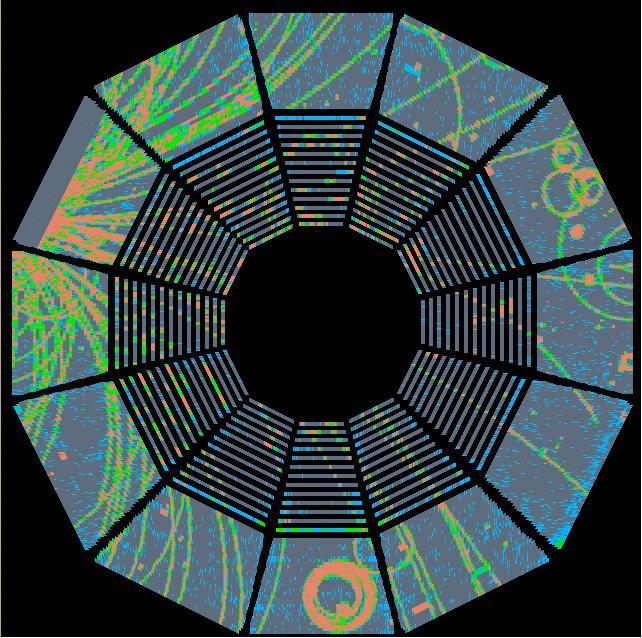 |
A cosmic ray shower in the STAR Time Projection Chamber (TPC) |
During this period, final testing and tuning of STAR detector components and systems has been accomplished. The work performed included final testing of the STAR magnet, final installation and testing of the STAR data acquisition receiver cards and architecture, continued development of the STAR software infrastructure, and continued integration of STAR's run-time systems. Final work on the installation of utilities and safety systems, and upon outfitting the STAR counting house are also in progress. Early testing of components and systems was accomplished during the RHIC commissioning run in mid 1999. After further installation and test activities in the summer shutdown of 1999, two further test runs in December (1999) and February of the STAR detector were accomplished using cosmic rays. During these periods the full STAR detector was fine-tuned in preparation for data taking in the Spring of 2000.
T. Hallman
![]()
Beam Components and Instrumentation
For the AGS, we are now concentrating the switchover that will occur March 15th. For RHIC, we have installed both scrapers. We are in the process of commissioning these units. The movable BPM has a motor drive system similar to the scrapers, and is presently being installed and commissioned. After the BPM work is completed the RHIC polarimeter will be installed. The group has nearly completed the work on the RHIC loss monitor system. The remaining work includes studies of individual channel offsets and threshold settings. Also at RHIC, the mystery of the beam current transformers instability has been solved. The fix involved using a special compensation network at the end of the cables. This compensation network is needed when long cables are used between the transformer and the front end amplifier. In this case, compensation was required for the short cables. And finally, work on another top priority, the completion of the MP6 bypass instrumentation continues. A large part of the wiring is completed. All of the individual module testing is completed. Overall system testing has started. We should be finished with MP6 bypass instrumentation by mid March. Miscellaneous work continues on projects such as the AC dipole, RHIC injection kickers, booster F6 magnet replacement, and etc. New projects on the horizon are the 7835 tube pinchoff test stand, booster F7 and f6 quarter cell magnet rebuild. Last but not least is the impending beam separator rebuild. Work on this project should start mid April.
Tom Russo
![]()
Collider Mechanical Support
With only the installation of the one, out of three, pin diode remaining of the RHIC tunnel work, the majority of the CMS Group will be employed with the continuing magnet press work in building 924 and equipment maintenance. The group will continue the assembly of crystal collimator support components. Spin Rotator Warm-to-Cold Transition prototyping will be on-going beyond March.
G. McIntyre
![]()
Controls Group
The Controls group is busy getting systems ready for RHIC operations, but you don't want to read about that! A mouse (the furry kind) has been reported on the third floor of building 911. Traps have been set but he's still on the loose. There's some evidence that he may be getting ill. He recently chewed his way into a box of cough drops.
Check out the new search engine available on the Controls home page ( http://www.cadops.bnl.gov/Controls ). Look for the Search button at the left of the row of options at the top of the page. You can thank Don Shea for making that feature available. Note that you need to be inside the firewall (on the cadops server, not on agsrhichome) to use the search feature.
(editors note: password is required for above mentioned URL)
J. Morris
![]()
Experimental Support and Facilities Division
The turn on of the RHIC collider is coming closer and closer, so it is essential that the work for experiments be completed before the tunnel is secured. A great deal of work can go into projects which are almost invisible. If one ventures into the PHENIX intersection region and peers down into the dimness below the floor grating there is a gleaming array of copper pipes. Literally miles of piping go in parallel groups and then fan out like roots to provide nourishment to the many different detectors of the PHENIX experiment. This nourishment is the pure gases, many with flammable components, which allow the wire chambers and Ring Imaging Cherenkovs to operate efficiently and safely. Dirty piping means poor performance and leaking piping means potential explosions, so this work must be done with care.
This piping installation was carried out by the "can do" cadre of mechanical technicians in the Mechanical Services Group during the past five months. The techs involved in the job were Larry Arnold, Charlie Bloxon, Ed Dabrowski, Jimmy Johnson, Robert Karl, Steve Pontieri, and Dudley Vail. John White is the Group's new tech supervisor and Charlie Pearson was the supervising engineer. The job is now nearly complete, and now the techs can come up for air.
The other three experiments of RHIC all are receiving attention at a slightly slower pace, and there is a major cleanup in preparation for new experiments in the East Experimental Area (Building 912). Also work continues for the Booster Application Facility.
Alan Carroll
![]()
Water Systems
After 24 years and 3 months of fun and games at BNL I thought it appropriate to say thanks to all my colleagues and friends for all the support you've provided over the years. I hope the next 24 goes a little slower. Finally I thought it appropriate to rewrite my R2A2:
R1 = Recreation
R2 = Recreation
A1 = Activities (Recreation, fun, games, travel, sleep late, golf and
recreation)
A2 = Activities (Recreation, fun, games, travel, sleep late, golf, recreation
and if time permits I might even fix a few things at home)
As for the status last month work effort; I submit the following:
We've finally received funds to proceed with construction of a new SEM cooling system. An ILR has been submitted to Plant Eng. to bid the work and provide field supervision during the construction stage. We're progressing with the preparation of a CDR (conceptual design report) for a 70 MEV Cyclotron (our effort is complete). If funded the cyclotron will be used jointly by the Chemistry & Medical depts. Design work is progressing, for cooling systems for the BAF project. The upgrade of the Tandem cooling system is complete and is in operation. Drawings are near completion for an upgrade to the Westinghouse cooling system.
Ed Dale
![]()
We WELCOME Aboard
| Stephen Jao | Steve comes to us from the Reactor Division and will be working with Tom Russo and Dan Lehn in the Beam Components and Instrumentation Group. |
| John Pepe | John is working with Bill Venegas in the Controls Division and comes to us from ITD. |
| Lisa Morello | The Administrative Group is happy to have Lisa who is working with John Brinker. |
| Bartosz Frak | Bartosz is a programmer and will be working with Ted D'Ottavio in the Controls Group. |
| Andrew Meyer | Andrew joins the Main Control Room. |
| Nicholas Kling | Andrew joins the Main Control Room starting March 13. |
and say FAREWELL to
| Ken Reece | Ken leaves us to join the SNS Group at ORNL. |
| Stephen Ellerd | Stephen leaves the RF & Instrumentation Group and takes his talent outside the BNL family. |
| Gary Utz | Gary leaves the Controls Group and takes his talent to Arrow Electronics. |
| Domenick Milidantri | Domenick is transferring from the Cryo Group to the Magnet Division. |
| Valerie Bryant | The warm weather of North Carolina entices Valerie away from her BNL family. |
We wish all of you good health and happiness in your new adventures.
![]()
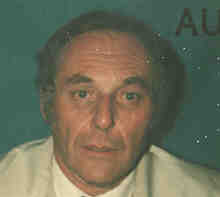 |
Celebrate on:
Wed. March 22 Time: 5:15 PM Place: BNL Center Cost: $28/person RSVP by: Fri. March 17 Contact: Ann Lamberti X7611 (If you have memories that you would like to have put in a memory book for Harvey please jot it down and send it to Ann Lamberti-Bldg. 1005. ) |
||
|
|
|||
 |
Celebrate on: Fri. March 24 Time: 5:30 PM Place: Michelangelo's Italian Restaurant Cost: $30/person RSVP by: Fri. March 17 Contact: S. Asselta X 4550 |
||
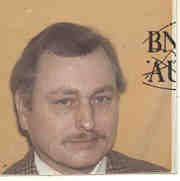 |
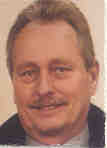 |
Celebrate
on: Fri. April 7 Time: 6 PM Place: Rockhill Country Club Cost: $30/pp-$50/cpl RSVP by: Fri. March 31 Contact: L. Mogavero X3940 |
|
![]()
We wish all our March
Birthday folks a happy and a healthy year ahead. Birthday people ONLY click on
cake ![]()
![]()
Our sincere condolences to
Roger Lee and Sandro Ruggiero on the passing of their loved ones.
We hope your memories help you through this difficult time.
![]()
J. Wei has received tenure. Congratulations Jay!
![]()
Dave Berley, head of the
Experimental Planning and Support Division back in the 70s is now retiring from
the
National Science Foundation (NSF). We wish Dave a happy and healthy
retirement!
![]()
Mei Bai from the C-AD Accelerator Physics Group has been awarded the "2000 APS Award for Outstanding Doctoral Thesis Research in Beam Physics" Award citation:" For her work in the theory, experimental demonstration, and clear explanation of a method using an RF dipole for overcoming intrinsic spin resonances in polarized proton acceleration" Thesis advisor: S.Y. Lee. This work was performed at the AGS.
![]()
Have you seen Letesha's
roses!  No
they're not from who you think! They are roses of
appreciation from
No
they're not from who you think! They are roses of
appreciation from
one of our experiments. Way-to-go Letesha!
![]()

Nicole Gill-Robinson (daughter of the proud Steve Gill) has been nominated for an Emmy. Nicole is a video tape editor for CBS News and her nomination is for a late breaking news story on August 30, 1999 involving a shooting in Brooklyn. Our congratulations go out to Nicole and her very proud Dad!
![]()
GERBER Class-Action Suit: If you have not sent in your information yet - DON'T - see the following: http://www.9news.com/extra/gerber.htm
![]()
 Travels of Eric Forsyth
- The Fiona Cruise to Antarctica 1998-1999 is available on video
Travels of Eric Forsyth
- The Fiona Cruise to Antarctica 1998-1999 is available on video
which can be signed-out from the Main Office, Bldg. 911B.
![]()
![]()
(Note: calendars will be updated as information is submitted)